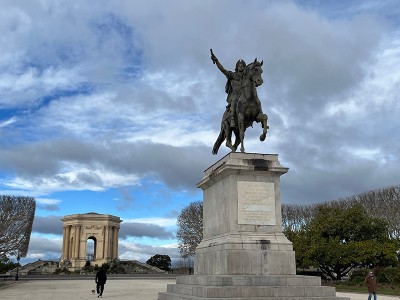 Patiala
Patiala
Sheesh Mahal: Enchanting elegance of Patiala
Indian ‘Maharajas’ and kings are known for their grandeur and opulence. “Live life king-size” probably refers to these rulers who did everything ‘larger than life.’
Patiala is a vibrant city, rich in culture and heritage and the Maharajas of Patiala are often referred to as connoisseurs of arts, literature, and music.
Patiala reflects a brilliant spectrum of different cultures with a beautiful blend of modern present and traditional past depicted in the flamboyant architecture of Mughals and Rajputs which stands as proud testimony of its glorious past.
The ‘Sheesh Mahal’ or The Palace of Mirrors is the jewel in the crown of Patiala.
The palace was built by Maharaja Narinder Singh, starting in the year 1845 up to 1862.
Upon its inception, it was visualized as a residential palace set up in a forest area with an artificial lake, fountains, gardens, and a suspension bridge. The palace is known for its spectacular art and architecture.
Built behind the main Moti Bagh Palace, the Sheesh Mahal is considered to be a tribute to its founder Maharaja Narinder Singh as it showcases his aesthetic sense in terms of its design and decoration.
Everything about the palace screams ostentatious glamour and grandeur.
The exterior is a fine representation of European and Mughal styles of architecture, complete with landscaped, manicured lawns spread till the eyes can see.
Its backdrop adds to its beauty with fountains, terraces, and even an artificial lake located near the Banasar Ghar (a repository for stuffed animals).
Two watchtowers stand tall and proud on either side of the Sheesh Mahal. If this is not grand enough, there is even a suspension bridge attached to the lake, called Lakshman Jhoola! It is a three-storied structure modeled on the designs of the Shalimar Bagh in Lahore.
Talking about its interiors, they do complete justice to the grandeur on the outside.
The Maharaja had excellent taste and knowledge about arts and paintings and hence, he invited skilled artists from Rajasthan and Kangra to bedeck the flamboyant insides of his home.
The walls are painted with frescos depicting the poetry of legendary poets like Bihari, Surdas and Keshaw. Poetry drawn on walls! Isn’t that a first? Imagine, works of stalwarts like Surdas ‘drawn’ on walls!! Well, if that wasn’t all, the palace walls have images pertaining to literature, mythology, and legends. These paintings portray Raga-Ragini, Nayak-Nayika, and Bara-Masa in Rajasthani style.
The walls and ceilings of the Sheesh Mahal are rich in floral designs, murals, and exquisite mirror work which on a sunny day, transforms it into a kaleidoscope of rich, warm, vibrant colors. However, the showstoppers of this palace are the miniature Kangra paintings, depicting Geet-Govind, by Jaidev and Krishna Lila. These are marvels in themselves as they display the minutest of details profoundly.
The wonders of Sheesh Mahal never cease to impress. Within its premises, it also houses a museum having artifacts and miniatures of Tibetan Art. There are various ivory decorative pieces that are inspiring, along with Kashmiri artifacts and wooden furniture of those times. These objects not only have beauty but they also tell tales of the years gone by. They provide glimpses into the history and lifestyle of the Maharajas.
The walls within the palace are adorned with life-sized portraits of the rulers of Patiala. Again, reminding the spectator of their aura and lineage. The Maharajas standing tall and proud, bedecked with fine jewelry and their weapons, their heads crowned with turbans surely make a formidable sight, reiterating the warrior and fighter in the Sikhs. Apart from these treasures, the palace also houses rare Janam Sakhi manuscripts and Jain scriptures. Nonetheless, the most valuable possession remains the Golistan-Bostan by Sheikh Sadi of Shiraz which was acquired by Mughal Emperor Shah Jahan for his personal library.
The Medal Gallery set up in the Sheesh Mahal consists of a formidable display of the largest number of medals and decorations in the world, numbering 3200. Maharaja Bhupinder Singh collected these from all over the world and his illustrious son gifted this prized collection to the Punjab Government Museum. The collection contains medals from England, Austria, Russia, Belgium, Denmark, Finland, Thailand, China, Japan, and several countries in Asia and Africa. Some noteworthy medals are the Order of the Gates (England), 1348AD, the Order of the Golden Fleece (Austria), 1430 AD, the Order of St. Andrews (Russia), 1688 founded by Peter the Great, the Order of the Rising Sun (Japan), the Order of the Double Dragon (China) and the Order of the White Elephant (Thailand).
There are also medals studded with precious stones issued by Maharaja Ranjit Singh and Maharaja Dalip Singh. Some of them display miniature paintings of the Maharaja in profile, orders and decorations carrying portraits of Guru Gobind Singh, Radha Krisha, etc. had been instituted by Maharaja Bhupinder Singh.
Besides medals, there is also a collection of rare coins. This numismatic collection presents a vast range from punch-marked coins to those issued by princely states in the 19th century.
The coins and medals displayed in the palace gallery shed light on history and form an important source of information about the trade, science, and commerce of those times.
‘Sheesh Mahal’ is like a window to the glorious past of Punjab. A visit to this legendary palace makes us relive the regal grandeur that graced the city of Patiala.
(Photo Courtesy and Text: Khalsavox.com)
Support Our Journalism
We cannot do without you.. your contribution supports unbiased journalism
IBNS is not driven by any ism- not wokeism, not racism, not skewed secularism, not hyper right-wing or left liberal ideals, nor by any hardline religious beliefs or hyper nationalism. We want to serve you good old objective news, as they are. We do not judge or preach. We let people decide for themselves. We only try to present factual and well-sourced news.






